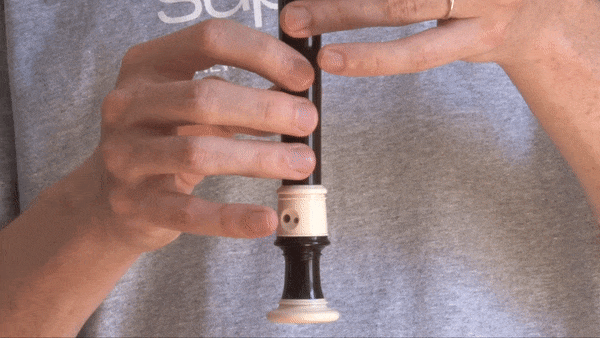
This Week - 2nd February
Friday 22nd May (it's a bit late I know - took longer than I expected...)
Ronde
- Work slowly and practice it bit by bit.
- Learn the rhythms first.
- Practice the tricky bits
- Follow the tutorial video. Keep pausing to practice, don't try to do it all at once!
- Can you play it all the way through without the letters?
- When you can play it slowly and neatly, start speeding up!
- Record yourself in BandLab - more information here.
Friday 22nd May (it's a bit late I know - took longer than I expected...)
Ronde
- Work slowly and practice it bit by bit.
- Learn the rhythms first.
- Practice the tricky bits
- Follow the tutorial video. Keep pausing to practice, don't try to do it all at once!
- Can you play it all the way through without the letters?
- When you can play it slowly and neatly, start speeding up!
- Record yourself in BandLab - more information here.
Friday 22nd May (it's a bit late I know - took longer than I expected...)
Ronde
- Work slowly and practice it bit by bit.
- Learn the rhythms first.
- Practice the tricky bits
- Follow the tutorial video. Keep pausing to practice, don't try to do it all at once!
- Can you play it all the way through without the letters?
- When you can play it slowly and neatly, start speeding up!
- Record yourself in BandLab - more information here.
1. Hand position
1. Hand position
1. Hand position
2. First 3 notes: G A B
2. First 3 notes: G A B
2. First 3 notes: G A B
This Week - 18th January / 22nd January
This Week - 26th January
This Week - 26th January
This Week - 26th January
This Week - 26th January
3. Tonguing
3. Tonguing
3. Tonguing
4. Changing notes
4. Changing notes
4. Changing notes
Brecknock & Torriano
Primary Federation
Coleridge Primary
Orchestra
Compositions from the CLC
Fleet Primary
Brass
How to play Low C
Our lowest note - one step lower than low D. Play:
To play it, you need to close all the holes on your recorder.
Your right hand little finger has to cover both the two small holes at the bottom,
on the tail joint. Your other fingers must stay carefully on their holes.
Any leaks and it won't work!


Tail joint
1. Adjusting the tail joint.
- Check your hand position - high wrists, flat fingers - there's a reminder here if you need one.
Finger a low D and test that it's working.
- Move your right hand little finger up and down.
See and feel where it lands. You can use a mirror for this, but try to feel it too.
- Twist the tail joint to the right (clockwise) until it's exactly under your little finger and you can cover both the holes without changing your hand position. Don't twist it too far!
- Keep your hands soft and relaxed.
- Play a low D.
Put your little finger down and try to get a low C.
Make sure your other fingers don't move off their holes!
2. Relax.
Your throat, face and shoulders need to be really relaxed.
If they're not, your low C won't work, even if the holes are all completely covered.
Start by breathing out very gently. Once the low C is working, try increasing your breath pressure to see how loud you can get it before it starts to squeak.
Aim for a nice full, round sound. Try not to wobble!
3. A scale from low C to high C

Tongued
Slurred
If you play the piano or another instrument, you may have learnt to play a C major scale.
(We're going to to do it in a few weeks time).
This scale's got one note that's different. Can you spot it?
Clue: look at the 4th note.
It's called a 'Lydian mode'.
If you already know a bit about scales, you'll notice it's got the same notes as G major but starts and ends on a C.
(If you don't know anything about scales, don't worry! You soon will...)
C major
4. Exercises
Some of these exercises are quite hard and there are a lot of them. They are really good for your playing.
Practice them slowly and bit by bit to start with.
Don't just stumble through them all at once!
It's a good idea to practice each line with just your fingers first. Keep them close to the holes.
Then play, tonguing every note.
Then try it slurred (as written).
Listen for unwanted sounds (messy fingers!) in between the notes.
(a) Low Cs with different notes in between.

(b) Slurring up

(c) Slurring down
